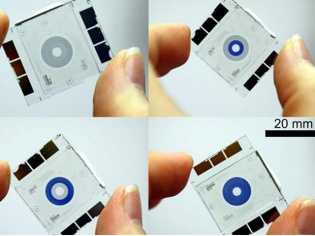-
Team TechTree
17:38 19th Jun, 2014
Researchers Develop Camera Iris With No Mechanical Parts | TechTree.com
Researchers Develop Camera Iris With No Mechanical Parts
The technology replaces the mechanical iris with a photochromatic material often reffered to as 'Smart Glass'

Researchers from the University of Kaiserslautern in Germany have devised a static equivalent of the bulky iris diaphragms in smartphone cameras with the use of ‘smart glass’. Instead of using mechanical blades to control the size of the aperture, the technology allows switching between transparent and opaque states, thereby controlling the amount of light incident on the sensor.
An electrochromatic material is that which can switch between transparent to opaque by supplying a small electric charge.
With the current trend of miniaturizing devices, it has become almost impossible to reduce the size of the already tiny mechanical components in a smartphone camera. But by using 'smart glass' to replace the iris, camera modules can be made tiny and even reduce power consumption.
“There is currently no technological solution available that meets all the demands of integrated iris apertures in smartphones,” said Tobias Deutschmann, lead author of the research paper.
The biggest advantage of using electrochromic materials to make an iris is they have no mechanical moving parts. Yet the functionality of the iris developed using this technology remains exactly the same, with the advantage of being much smaller.
The researchers will now work on perfecting the concept, to improve the light absorption properties of the electrochromic material, as well as the switching time between clear and opaque states. Only after these last few hurdles have been passed can the technology be ready for use in consumer products.
TAGS: Smart Glass, camera technology
- DRIFE Begins Operations in Namma Bengaluru
- Sevenaire launches ‘NEPTUNE’ – 24W Portable Speaker with RGB LED Lights
- Inbase launches ‘Urban Q1 Pro’ TWS Earbuds with Smart Touch control in India
- Airtel announces Rs 6000 cashback on purchase of smartphones from leading brands
- 78% of Indians are saving to spend during the festive season and 72% will splurge on gadgets & electronics
- 5 Tips For Buying A TV This Festive Season
- Facebook launches its largest creator education program in India
- 5 educational tech toys for young and aspiring engineers
- Mid-range smartphones emerge as customer favourites this festive season, reveals Amazon survey
- COLORFUL Launches Onebot M24A1 AIO PC for Professionals







TECHTREE